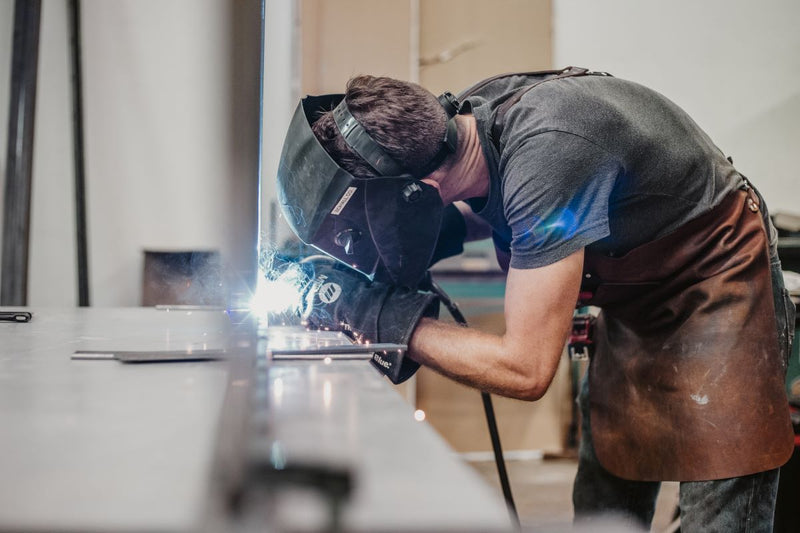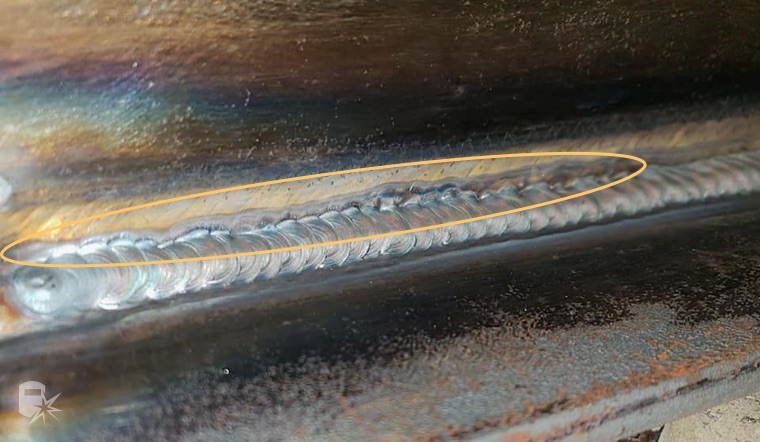Important Tips for Welders: Stopping Undercut Welding and Ensuring Stronger Weld Joints
In the realm of welding, accomplishing resilient and strong weld joints is the cornerstone of generating top quality work. One usual obstacle that welders frequently experience is undercut welding, which can jeopardize the stability of the weld joint. By comprehending the elements that add to undercutting and carrying out the right methods and safety measures, welders can effectively stop this problem and ensure the durability and strength of their welds. Let's discover some essential tips that can aid welders navigate this challenge and boost the top quality of their welding tasks.

Understanding Undercut Welding
Undercut welding is a common welding defect that occurs when the weld metal fails to appropriately load the groove and causes a groove-like anxiety along the weld bead. This flaw deteriorates the weld joint, making it prone to fracturing and failure under stress. Damaging can be triggered by various aspects, including extreme welding existing, high welding speed, incorrect electrode angle, wrong electrode dimension, and inadequate welding strategy.
Among the major factors for undercut welding is a discrepancy between the welding present and the welding rate. If the welding current is as well high or the welding rate is as well fast, the weld steel may not effectively fill the groove, leading to undercutting. Furthermore, utilizing an electrode that is also large can cause a similar result, as the excess steel can not correctly move into the groove.
To prevent undercut welding, welders ought to ensure they are utilizing the proper welding criteria, maintain an ideal electrode angle, select the suitable electrode size, and practice correct welding methods. By addressing these elements, welders can decrease the risk of undercutting and produce stronger, extra reliable weld joints.
Proper Welding Strategy
Efficient welding technique plays an essential role in making sure the high quality and honesty of weld joints. Proper welding strategy includes a combination of precision, skill, and adherence to best practices. One essential facet of appropriate welding technique is keeping the proper angle and distance in between the welding weapon and the workpiece. Welders need to also pay close interest to the traveling speed and heat input to prevent concerns like damaging, porosity, or insufficient blend.
In addition, a steady and consistent hand motion is vital for creating strong and sturdy weld joints. Welders ought to go for smooth, uniform activities to ensure even circulation of the weld material. Proper adjustment of the welding gun and filler material is also key to achieving optimal penetration and blend.
In addition, controlling the warm input and picking the ideal welding criteria based on the product being bonded are important factors in accomplishing top quality welds - Preventing weld undercut. Welders should follow the advised settings offered by welding procedure specifications and adjust them as needed based upon the certain demands of the project. By understanding proper welding techniques, welders can dramatically enhance the toughness and dependability of their weld joints
Selecting the Right Electrode
When thinking about the significance of selecting the appropriate electrode in welding applications,Maintaining the right angle and range in between the welding weapon and the workpiece is basic. The choice of electrode plays a critical function in determining the high quality and toughness of the weld joint. Electrodes can be found in various types, each created about his for certain purposes and materials.
To start with, selecting the proper electrode diameter is essential. Thinner electrodes are suitable for welding slim materials, while thicker electrodes are better for thicker materials and higher warmth applications. Matching the electrode diameter to the thickness of the workpiece assists attain a balanced weld.
Secondly, comprehending the material structure of the electrode is important. Various electrodes are designed for welding particular products like steel, stainless-steel, light weight aluminum, or cast iron. Utilizing the appropriate electrode material makes sure good blend and reduces the risk of problems in the weld.
Lastly, thinking about the welding placement and method is vital when picking the electrode type. As an example, specific electrodes are much better fit for above or upright welding positions, while others function well for flat or horizontal positions. Picking the ideal electrode based on the welding strategy enhances the total weld top quality and honesty.
Preparing the Base Steel
To make sure an effective welding process, what preliminary actions should be taken when preparing the base metal for welding? Additionally, any type of existing weld product or residue from previous welding must be removed to make sure a clean surface area for the brand-new weld.

Performing Post-Weld Examinations

After performing these analyses, welders should compare the results against market criteria and project requirements to ensure that the weld joint meets all essential criteria. Any type of inadequacies or inconsistencies discovered throughout the post-weld examination ought to be immediately attended to with appropriate restorative measures to assure the weld's honesty. By carefully carrying out post-weld inspections and promptly resolving any type of issues, welders can promote the high quality and reliability of their job, eventually adding to the security and longevity of the bonded structures.
Verdict

In final thought, preventing undercut welding and making sure stronger weld joints need a mix of proper welding strategy, choosing the appropriate electrode, preparing the base metal appropriately, and conducting post-weld examinations. By comprehending the reasons for undercut welding and executing the essential precautions, YOURURL.com welders can generate premium weld joints that fulfill industry requirements and ensure the structural honesty of the welded elements.
Undercut welding is an usual welding defect that happens when the weld steel falls short to correctly fill up the groove and results look at this website in a groove-like clinical depression along the weld bead (Preventing weld undercut). Undercutting can be created by various elements, consisting of too much welding current, high welding speed, incorrect electrode angle, wrong electrode dimension, and poor welding technique
One of the primary factors for undercut welding is an inequality in between the welding current and the welding speed. If the welding current is as well high or the welding rate is also quickly, the weld steel might not sufficiently load the groove, leading to damaging.Maintaining the correct angle and distance between the welding gun and the work surface is essential when taking into consideration the relevance of choosing the right electrode in welding applications.